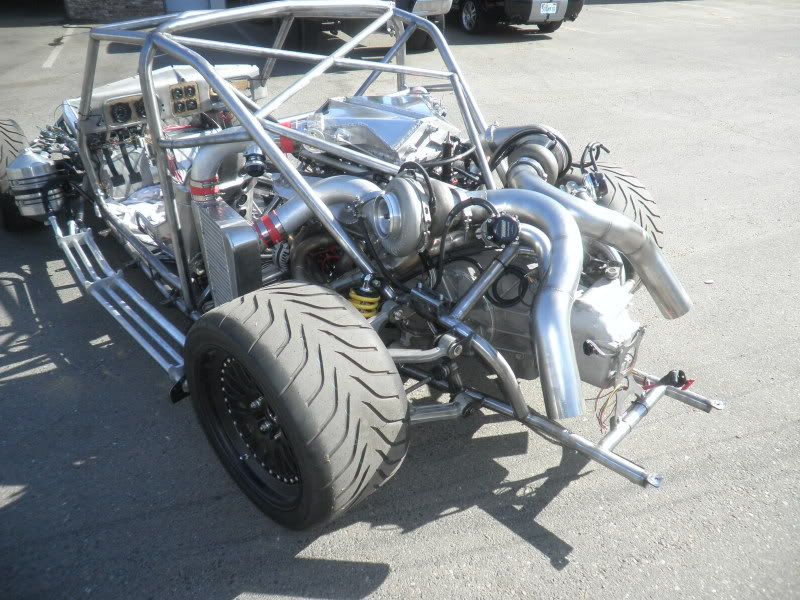G'day there,
I've been looking around for the least expensive way to build a 1000 HP engine that could potentially fit into a GT40 chassis. Here's what I got so far:
Reaching the 1000 HP goal without forced injection means going for a big block which will be very difficult to fit into a GT40 chassis. Here an example: Scott Shafiroff 632 CI (more than 10 liter displacement) Big Dawg:
A better way would be to go with forced induction, and Chevy has a very nice, inexpensive series of crate engines, based on the LSX iron block (small-block with 4.4" piston spacing, rated to 2500 horsepower). Baseline version "19171049 - LSX376" has
Just recently, Chevy has brought out that very same engine with all-forged internals (4340 steel crankshaft), which is rated for 15 PSI of boost. 15 PSI of boost can give more than 1000 HP, and there are small, radial superchargers (Paxton Novi 2500) that could fit into a GT40. GM engine number is "19299306 - LSX376-B15". They go for 7800 USD at JEGS.com. The supercharger kit will cost around 4-5 grand but doesn't have to be added right away, but later down the road when saved a little more money.
Any thoughts?
I have not found anything in the Ford-corner that could be built for that price.
I've been looking around for the least expensive way to build a 1000 HP engine that could potentially fit into a GT40 chassis. Here's what I got so far:
Reaching the 1000 HP goal without forced injection means going for a big block which will be very difficult to fit into a GT40 chassis. Here an example: Scott Shafiroff 632 CI (more than 10 liter displacement) Big Dawg:
- 1000 HP @ 6500 RPM
- 865 lb ft @ 5500 RPM
- BxS 4.600 x 4.750
- compression: 10.75 to 1
- 93 Octane
A better way would be to go with forced induction, and Chevy has a very nice, inexpensive series of crate engines, based on the LSX iron block (small-block with 4.4" piston spacing, rated to 2500 horsepower). Baseline version "19171049 - LSX376" has
- 450 HP @ 5900 RPM
- 444 lb ft @ 4400 RPM
- BxS 4.060 x 3.620
- compression: 9 to 1
Just recently, Chevy has brought out that very same engine with all-forged internals (4340 steel crankshaft), which is rated for 15 PSI of boost. 15 PSI of boost can give more than 1000 HP, and there are small, radial superchargers (Paxton Novi 2500) that could fit into a GT40. GM engine number is "19299306 - LSX376-B15". They go for 7800 USD at JEGS.com. The supercharger kit will cost around 4-5 grand but doesn't have to be added right away, but later down the road when saved a little more money.
Any thoughts?
I have not found anything in the Ford-corner that could be built for that price.
Last edited:


